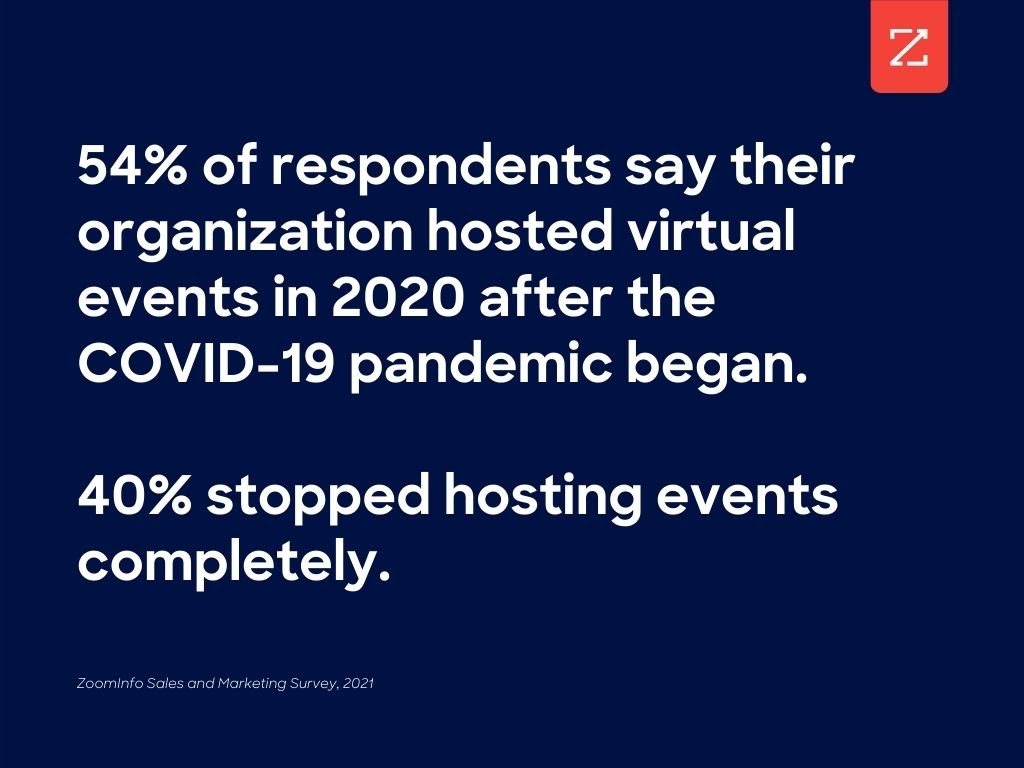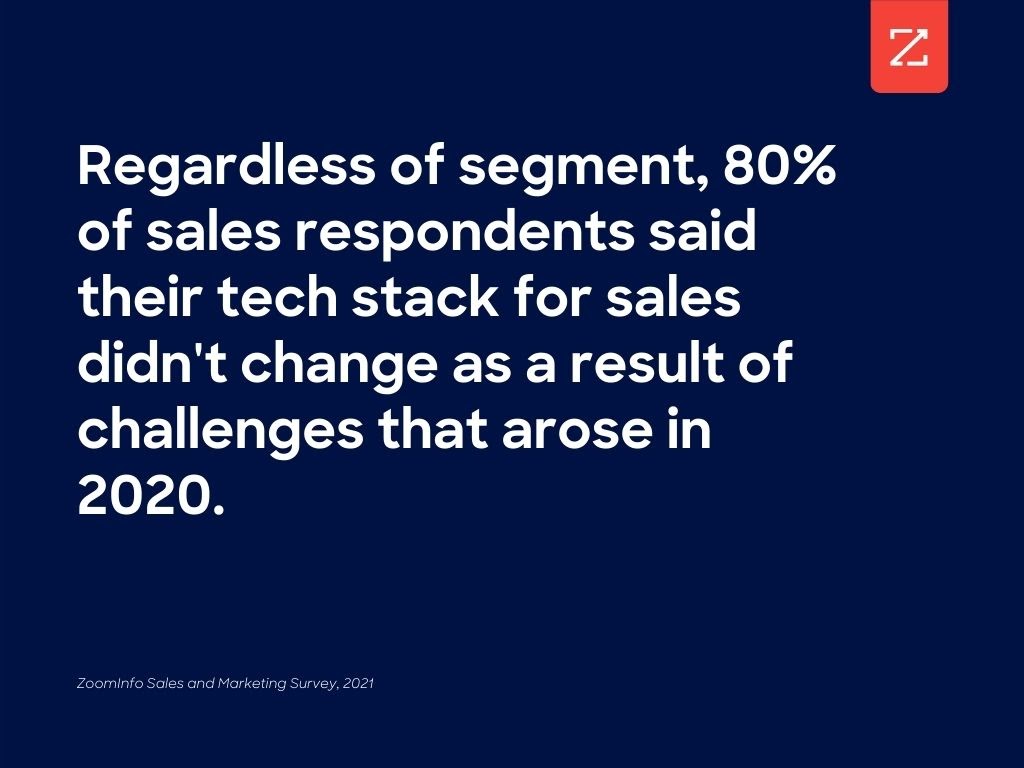The pandemic changed the day-to-day processes of the B2B sales organization practically overnight when the world went 100% digital.
A recent ZoomInfo survey of about 600 sales and marketing professionals found that most sales reps said they relied on in-person events for prospecting before 2020. Last year, however, many stopped using events for prospecting, instead adopting old-fashioned methods like (gasp!) actually calling people on the phone.
Here’s a closer look at how sales rep processes changed in the past year and whether these new methods will outlast the pandemic.
Adapting to change at scale

Eighteen percent of survey respondents reported that their teams shrank last year, the most common change, while 13 percent said they had to shift resources from in-person to online (no surprises there).
Prospecting in the event-less landscape

Before last year, most sales reps said they identified likely prospects by meeting people at events. Flash forward to 2020: 41 percent of sales respondents stopped using events for prospecting and 19 percent started using video calls for the first time.
Sales reps are also leaning on more traditional ways to reach out to potential buyers. And it wasn’t just through Zoom meetings: 62% of respondents to ZoomInfo’s survey said they used the phone more in 2020 than in prior years.
The most oft-cited challenge for sales activities remains connecting with qualified prospects, with 33% of respondents citing “finding accurate contact information” as a key obstacle in the process.
And so it’s clear that one thing didn’t change throughout the pandemic. Access to high-quality data about potential customers remains more important than ever before.
Accessing quality data via channels that stillwork

The majority of survey respondents reported that their sales tech stack didn’t change much during the pandemic. Other approaches to prospecting — including bulk emails, direct messages on social media platforms, website chat messages, and text messaging — held steady as well.
But phone calls, video calls or meetings, and individual emails were used more frequently by a majority of sales reps. And the most commonly cited effective way to identify prospects? Inquiries on the company website and engagement with marketing content.
This means that sales reps who have access to qualified, engaged prospects are going to close more deals than the ones who don’t. And that isn’t going to change once the world completely opens up for in-person business again.
In conclusion …
So, what did reps do differently last year? In short, they adapted.
Some reps are working on smaller teams, while others are filling their prospecting funnel with fewer business cards in hand. Many switched gears by picking up the phone for the first time in a while. They all have one thing in common, though.
Without quality intelligence to guide them, even the best reps run the risk of failing to adapt to the new normal.

